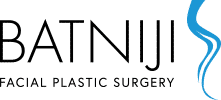Rhinoplasty in Newport Beach and Beverly Hills
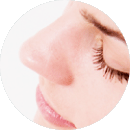 Rhinoplasty (also commonly referred to as a nose job) is a surgical procedure designed to reshape the nose.
Rhinoplasty (also commonly referred to as a nose job) is a surgical procedure designed to reshape the nose.
The surgery commonly addresses such issues as a nasal bump or hump, an unrefined nasal tip, a crooked or large appearance, wide nostrils, and/or nasal obstruction. Many patients also consult with Dr. Batniji for revision rhinoplasty to correct problems which have resulted from a previous rhinoplasty surgery performed by another surgeon.
Am I a Good Candidate for a Nose Job?
Rhinoplasty is appropriate for healthy men and women who have reasonable expectations for improving their nasal appearance and/or function. When it comes to younger patients, the surgery is best performed only after the nose has completed its growth, which may be around the age of sixteen or later.
There are two main variations of rhinoplasty that come with different benefits. The most common you might hear about is cosmetic rhinoplasty, as this is what reshapes the outside appearance of the nose, from minor adjustments to a full restructuring. Although cosmetic rhinoplasty gets a majority of the attention, functional rhinoplasty is aimed at the internal passageways of the nose.
People who are in need of functional rhinoplasty may be suffering from discomfort due to features they were born with or due to injuries that changed the way the inside of their nose looks, feels, and functions. The functional method also works on the exterior to help improve breathing and achieve a more uniform look, but it primarily focuses on the overall function of the nasal area.
Cosmetic rhinoplasty entails reshaping the nose in hopes of achieving a more aesthetically pleasing appearance. The operation can make a nose smaller or larger based on a patient’s desired outcome. It can also do wonders to correct bumps, reshape the tip of the nose, and adjust many other unique nasal qualities that many people share.
Dr. Batniji is highly skilled in various nose job techniques, including dorsal hump reduction and preventing “open roof deformity” from occurring.
Why Choose Dr. Batniji as My Rhinoplasty Specialist?
Located in Newport Beach, California, Dr. Batniji is the premier rhinoplasty specialist of Southern California and beyond. Board-certified by the American Board of Facial Plastic & Reconstructive Surgery and by the American Board of Otolaryngology, the doctor has dedicated his entire career to facial plastic surgery, including rhinoplasty. He is an expert at creating beautiful, natural rhinoplasty results that are in harmony with the patient’s features. As well, he is considered Newport Beach’s ethnic rhinoplasty specialist.
Dr. Batniji is affiliated with several accredited outpatient surgery centers throughout Southern California, including Newport Beach Surgery Center, as well as several area hospitals including Hoag Memorial Presbyterian Hospital in Newport Beach, California. Depending on the nature of your surgery, your rhinoplasty procedure may be performed at a surgery center or in the hospital.
For more information about Dr. Batniji, or to view his full CV, click here.
Where Can I View Dr. Batniji’s Previous Nose Job Photos?
Click here to view Dr. Batniji’s rhinoplasty before and after photos.
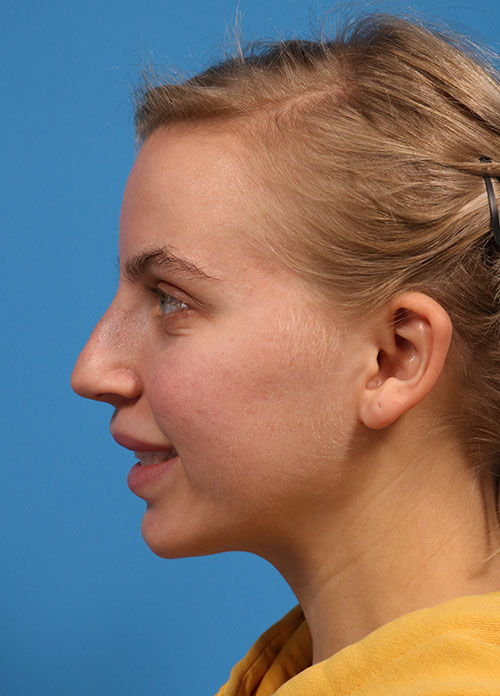
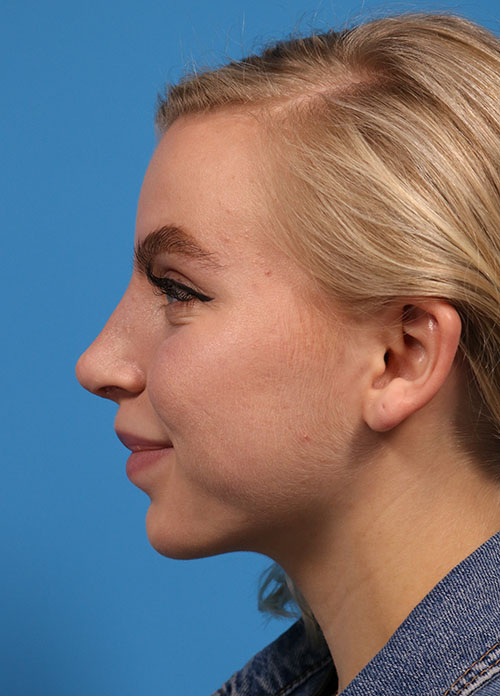
– R. Stockton, Corona, CA
What Type of Anesthesia is Used?
Dr. Batniji commonly performs rhinoplasty with either local anesthesia and sedation or with general anesthesia.
What Happens During the Rhinoplasty Procedure?
There are a few necessary steps that patients need to take to prepare for surgery day, and your doctor will always ensure you’re well educated on the surgery before it happens. On the day of your rhinoplasty procedure, you can expect to fill out the necessary medical information forms as well as provide emergency contacts.
It’s vital to have a friend or family member who can drive you home from your appointment as you won’t be in any state to operate motor vehicles or heavy machinery immediately after your operation. Aside from the medical and contact forms, it’s common to sign another form that states you understand the potential risks associated with the procedure, regardless of how minimal they may be. It’s also essential to cover the rhinoplasty cost, so the full scope of financial requirements associated with the operation is understood. Once you’re gowned up for surgery, you’ll have a final discussion with Dr. Batniji.
Depending on the work to be done, your rhinoplasty procedure may utilize a closed technique or an open technique. The incisions for closed rhinoplasty are made entirely on the inside of the nose whereas open rhinoplasty requires an additional small incision made on the underside of the nose on the skin between the nostrils.
Once the incisions are made, Dr. Batniji will separate the nasal skin from the underlying framework of bone and cartilage and then sculpt the bone and cartilage into a new shape. Dr. Batniji focuses not only on the appearance of the nose but the function as well and, if necessary, he will also correct a nasal obstruction during surgery.
For instance, rhinoplasty surgery may also involve the correction of a deviated septum or enlarged turbinates. Surgical times generally range from one to two hours, though more complicated procedures may take longer.
What is the Recovery Like? When Will I See My Rhinoplasty Results?
Dr. Batniji takes several precautions both prior to and during surgery to minimize the risk of bleeding and thus the need for nasal packing. This generally allows for a much more comfortable recovery. Nevertheless, patients may experience some discomfort, such as a dull headache or an achy nose, and this can be treated with medication. Swelling and bruising are common and can result in an initial puffy facial appearance. Bruising may also occur around the eyes.
The majority of swelling resolves within the first two weeks after surgery, however, final tip refinement may take approximately 6-12 months. Dressings and splints applied to the nose after surgery are usually removed after one week. Work and most non-strenuous activities can be resumed one week after surgery. It’s best to avoid direct exposure to the sun after a rhinoplasty, or wear sunblock.
The path to healing may sound like a simple process, but it comes in numerous stages throughout a year-long recovery period that could be a nuisance or uncomfortable for some. Most patients can resume their everyday lifestyles and activities within a week or two after their nose surgery. Still, it’s crucial to pay close attention to what you can and can’t do throughout recovery. Exercise should be postponed for about one week after rhinoplasty.
It’s advised to stay away from cardiovascular activities such as jogging for about six weeks. Between 3 to 6 months into recovery, any abnormal sensations or numbness will begin to dissipate. For some rhinoplasty patients, it can take up to a whole year for residual swelling to go away, so it’s essential to consider that a nose job is a long-term commitment with its own set of obstacles that every patient should prepare for.
Actual Follow-Up Appointments for Rhinoplasty Patients
Modern Rhinoplasty Interview
What Are the Potential Risks?
Every patient’s experience will be different, and rhinoplasty does come with a handful of potential risks. Some include a hole in the septum, nasal obstruction, and even scarring on the outside of the nose. Unfortunately, it’s possible that a patient may not like the end results after they’ve fully healed, and a lot of this pertains to the surgeon you decide to work with.
The best way to prevent these risks is to discuss them with your surgeon and also vet their past work to ensure they’re qualified for the job. Rhinoplasty is a tricky procedure that requires unwavering precision, and the associated risks should be considered before walking into surgery.
During surgery, it’s possible to encounter bleeding, a negative reaction to anesthesia, or infection. Less common risks include permanent numbness, an uneven structure, difficulty breathing, and more. Although a majority of rhinoplasty patients come out happy and healthy by the end of recovery, the potential risks shouldn’t be ignored by any means.
Are There Any Alternatives to Rhinoplasty?
Surgery isn’t an option for everyone, whether due to existing health concerns or the simple discomfort of going through with the surgery itself. Some people would love to change the way their nose looks, but they’d rather stay away from the operating table. Thankfully, with the help of modern medicine, there’s a solid alternative to rhinoplasty that comes with substantial results. If you talk to your surgeon about potential options, they might direct you toward what’s called a liquid nose job.
In short, this minimally invasive procedure consists of injections of a hyaluronic acid, which can fill, narrow, or even out different parts of the nose, providing overall enhancement. This isn’t to be confused with Botox, but it may be used to help refine features.
One of the biggest benefits of this alternative is that it comes with an extremely short recovery period. Patients may experience minor bruising, but this usually quickly fades away. Most people are back to their normal activities merely hours after their procedure. It’s pretty clear why someone may choose this option, but keep in mind that traditional rhinoplasty offers long-term results with more customization to what’s possible for your nose.
Another aspect of liquid injections is that the results can be easily manipulated if the patient isn’t satisfied with the outcome. All the surgeon has to do is dissolve the existing injections, and, if the patient wants, they can easily do the procedure again in hopes of a better outcome. Many people consider this approach to be revolutionary in comparison to traditional rhinoplasty, but it isn’t the best option if you’re looking for long-term results or a drastic change in your appearance.
Are You a Good Candidate for Non-surgical Options?
You might be curious if this alternative is suitable for you, but you’ll be happy to know that even more people are excellent candidates for non-surgical options such as dermal filler injections than traditional rhinoplasty. This is due to several reasons, from its non-invasive nature to the ability to dissolve the injections themselves, and it’s a less permanent solution for people who aren’t keen on making massive commitments.
When you consider the potential outcome of your rhinoplasty procedure, there’s always the chance it doesn’t come out how you want. If you decide to go back in for another procedure after fully healing, this can put some wear and tear on the body. It’s best to achieve what you’re looking for the first time around, but a lot of this comes down to the surgeon you work with. Dr. Batniji provides an extensive skill set that every patient will benefit from. If you need additional work down the road, you’re in good hands, from the consultation and operation to the long road to recovery.
Schedule a Rhinoplasty Consultation
If you’re interested in scheduling a consultation for a rhinoplasty at our Beverly Hills or Newport Beach office, please call or contact us today!
Rhinoplasty in New Port Beach FAQs
How long does a nose rhinoplasty last?
How much is the cost of rhinoplasty?
What is the difference between a nose job and a rhinoplasty?
What age is good to get a nose job?
While there is no definitive age you should have a nose job, it is suggested to get the procedure once your nose has stopped growing. Typically, this occurs somewhere around ages 14-16.
Many patients wait until they are at least 18 years old before choosing a permanent cosmetic procedure such as a rhinoplasty. The choice to have an appearance-changing procedure also requires that the patient is mentally and emotionally prepared for it. The procedure should be done after considerable thought and consultation with a board-certified plastic surgeon in Newport Beach so that patients clearly understand realistic expectations.
What makes Dr. Batniji the best rhinoplasty surgeon in Orange County?
Dr. Batniji has a reputation for being the best plastic surgeon in Orange County. He is board certified by the American Board of Facial Plastic and Reconstructive Surgery as well as the American Board of Otolaryngology, making him highly esteemed among his patients and peers. He limits his practice to exclusively offering facial plastic and reconstructive surgery, with rhinoplasty being one of his most commonly performed procedures.
Dr. Batniji’s patients enjoy peace of mind knowing he has the specialized experience they can trust to confidently complete their rhinoplasty procedure. His commitment to making each patient feel comfortable throughout the treatment period makes him one of the most highly regarded rhinoplasty surgeons in Newport Beach and surrounding areas. Patients know that when they turn to Dr. Batniji, they will receive the highest level of care possible.
Do you have to break your nose for rhinoplasty?
How long after nose surgery do I have to wait to exercise?
It’s important to give your body ample time to heal after surgery, even if you start to feel better after a few days. While it may seem like your nose is not related to your body’s ability to do exercises, starting physical activity too soon could derail your recovery.
Here is a general guideline for when you can start exercising again.
Week One
The first week after your rhinoplasty surgery is the most vulnerable. Make a diligent effort to handle yourself with care. You should limit physical activity to only short walks around your home for no more than 20 minutes per day. Pay close attention to your body and take breaks or stop physical activity if you notice shortness of breath.
Remember, you are at higher risk for high blood pressure and bleeding immediately following surgery. Focus this time on staying well-hydrated and participating in simple, easy activities such as walking.
Week Two-Four
During weeks two to four, any bandages or splints will be removed. The day that your bandages are removed give yourself a full 24 hours before doing any other physical activity. You’ll still likely have some bruising and swelling, but you’ll be well on your way to mending. You may be tempted to get back into your regular exercise routine, but it’s important that you still limit yourself as your body is still healing.
At this point, you can start some more low-impact activities such as longer walks or some light, a no-contact activity that doesn’t require you to lower or bow your head toward the ground. You may start to incorporate strength training at about 50% effort.
Week Four to Six
At this point, you’ll likely feel much better, but you should continue to listen to your body for signs of distress, such as shortness of breath or increases in inflammation or bleeding. You can slowly start to increase your physical activity to moderate levels but still avoid contact sports or activities where you may get hit in the face.
You can increase strength training to about 80% effort, and many people can start jogging or short-distance swimming. However, if you have had any delays in your recovery or are still experiencing pain, you may not be ready to increase your physical activity yet.
Week Six
Generally, people can get back into their regular exercise routine at the six-week mark. However, you should still avoid contact sports unless your doctor approves it. You are still at higher risk for injury if an impact were to occur. Speak with your surgeon about your specific exercise routines and activities to learn more about what you should participate in or avoid.
Remember, it can still take several months or even a year before you completely recover from rhinoplasty surgery.
